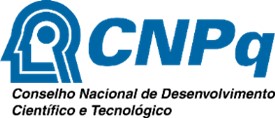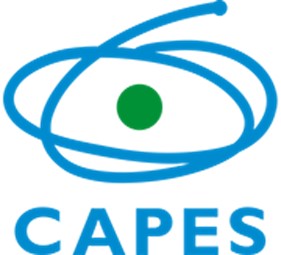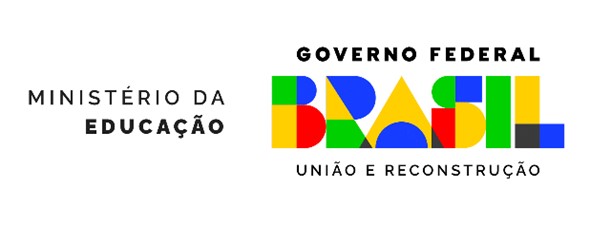ARTIGOS RECENTES
Artigo
HYDROCARBON RETENTION AND DISPOSAL CHALLENGES OF IRON OXIDE-BASED SCAVENGERS IN OFFSHORE GAS SWEETENING
Rafael André Lourenço ; Rafael Patrick R. Marcelino; Adriana D'Alessio Rendelucci; Antonio Derley S. Pereira; Josilene da Silva
; Rafael Patrick R. Marcelino; Adriana D'Alessio Rendelucci; Antonio Derley S. Pereira; Josilene da Silva

An iron oxide-based scavenger captures hydrogen sulfide along with aliphatic (AHs) and polycyclic aromatic hydrocarbons (PAHs) from raw natural gas. While enabling the production of purified sweetened gas, the process requires careful management of the spent scavenger due to hydrocarbon retention.
http://dx.doi.org/10.21577/0100-4042.20260006
QUANTIFICAÇÃO DE COBRE EM DOCES TRADICIONAIS DA REGIÃO DOCEIRA DE PELOTAS: CONTRIBUIÇÃO DO CONHECIMENTO CIENTÍFICO PARA O DEBATE SOBRE O USO DE TACHO DE COBRE NA MANUFATURA DE DOCES ARTESANAIS
Matheus L. Rufino ; Diogo L. R. Novo
; Diogo L. R. Novo ; Wiliam Boschetti; Bruno S. Pastoriza; Alessandro C. Soares
; Wiliam Boschetti; Bruno S. Pastoriza; Alessandro C. Soares

Pelotas, in southern Brazil, is known as the National Capital of Sweets. Traditional production uses copper pans, which are essential to local confectionery, although their use is prohibited in the city. This study quantifies the copper content in traditional sweets and compares the results with regulatory limits established for this metal in other foods.
http://dx.doi.org/10.21577/0100-4042.20260004
Antioxidant potential, photoprotective activity, and HPLC-ESI-MS profiling of Evolvulus species from the Brazilian Caatinga
Maria Beatriz Félix Mendes NunesI; Thalisson Amorim de SouzaI; Juliana de Medeiros GomesI; Carlos Vinicius Azevedo da SilvaII; Laiane Caline Oliveira PereiraI; José Iranildo Miranda de MeloIII; Hector Henrique Ferreira KoolenII ; Marcelo Sobral da SilvaI; Josean Fechine TavaresI,*
; Marcelo Sobral da SilvaI; Josean Fechine TavaresI,*

This study reports the chemical profiling of two Evolvulus species and assesses their phenolic content, antioxidant activity, and sun protection factors (SPF). Both species demonstrated promising biological activities and potential applications as ingredients for sunscreen formulations.
http://dx.doi.org/10.21577/0100-4042.20260001
Estudos biofísicos entre bendamustina, um agente antitumoral alquilante, e o DNA: contribuições para o entendimento do processo de interação
Victorya G. Silva Medeiros; Carla de A. Vital; Ari S. Guimarães; Isis M. Figueiredo; Josué Carinhanha C. Santos

Bendamustine forms a stable and complex with CT-DNA (calf thymus-deoxyribonucleic acid) by non-covalent interactions and non-intercalating binding, suggesting a new antineoplastic mechanism.
http://dx.doi.org/10.21577/0100-4042.20250237
Leaching cathode metal ions from spent LiFePo4 power batteries using lactic acid-based deep eutectic solvents
Jianjiao JinI,* ; Jinbao GaoI; Chongyu LiI,*; Zhang YuanI; Pengxin YuanI; Chenyun ZhangII; Minhao CaoI; Xinyang WuIII; Tianjun XiaoI
; Jinbao GaoI; Chongyu LiI,*; Zhang YuanI; Pengxin YuanI; Chenyun ZhangII; Minhao CaoI; Xinyang WuIII; Tianjun XiaoI

This study employs an eco-friendly lactic acid-based deep eutectic solvent (DES) for leaching and recycling metal ions from spent LiFePO4. The prepared DES achieves a Li leaching efficiency of 94.57% and an Fe leaching efficiency of 92.98% under optimal conditions.
http://dx.doi.org/10.21577/0100-4042.20250236
Digital image processing and machine learning as an enhancement of the scott test
Roberta C. TestaI; João G. SoetheI; Isabella F. MeloII; Vanderlei A. de LimaIII; Andressa GalliI,*

The graphical abstract summarizes the colorimetric Scott test for cocaine detection, image processing with GIMP® (GNU Image Manipulation Program), color parameter extraction in ChemoStat®, collinearity analysis in RStudio®, and classification algorithm evaluation based on performance metrics.
http://dx.doi.org/10.21577/0100-4042.20250234
Estudo da atividade catalítica do complexo [RuCl2(p-cimeno)]2 na metátese/isomerização de olefinas de alilbenzenos substituídos
Alexandre D. PereiraI; Aline A. C. FrançaII; Adny G. O. VianaIII; Beatriz S. SilvaIII; Roseane S. S. de CarvalhoIII; José A. de SousaI; Eliada A. da SilvaIV; Benedito S. Lima NetoIV ; José M. E. de MatosI,*
; José M. E. de MatosI,* ; José Luiz S. SáII
; José Luiz S. SáII

The [RuCl2(p-cymene)]2 complex promotes the isomerization and olefin metathesis of substituted allylbenzenes (methyleugenol, eugenol, and estragole), highlighting the influence of catalyst-to-substrate ratio and olefin acidity on product selectivity.
http://dx.doi.org/10.21577/0100-4042.20250233
Estudo da autenticidade de cédulas de cem reais por espectroscopia na região do infravermelho médio e próximo associada a métodos quimiométricos
Anna Clara F. BrazI; Jandira M. O. B. BrandãoII,III; Nayara A. dos SantosI,II ; Márcia H. C. NascimentoII; Bruno M. M. SiqueiraI,II
; Márcia H. C. NascimentoII; Bruno M. M. SiqueiraI,II ; Paulo R. FilgueirasII
; Paulo R. FilgueirasII ; Wanderson RomãoI,II,IV,*
; Wanderson RomãoI,II,IV,*

The study uses infrared spectroscopy techniques to differentiate authentic and counterfeit Brazilian banknotes. Spectral data were analyzed using near-infrared (NIR) and Fourier transform infrared (FTIR) spectroscopy, then processed with Matlab, Origin and Orange.
http://dx.doi.org/10.21577/0100-4042.20250232
Novel dihydropyrimidine-thione derivatives as cholinesterase inhibitors targeting alzheimer's disease: advanced structural characterization, computational modelling and biological evaluation
Aisha A. AlsfoukI; Pervaiz Ali ChannarII; Aftab AhmedIII; Syeda Abida EjazIII,* ; Aamer SaeedIV,*; Tahira ShamimV; Rabail UjanVI; Hammad IsmailVII; Michael BolteVIII; Ulrich FlorkeIX; Tuncer HökelekX
; Aamer SaeedIV,*; Tahira ShamimV; Rabail UjanVI; Hammad IsmailVII; Michael BolteVIII; Ulrich FlorkeIX; Tuncer HökelekX

The newly synthesized crystal of dihydropyrimidine-thiones were evaluated as cholinesterase inhibitors targeting Alzheimer's disease via comprehensive in vitro and in silico investigations.
http://dx.doi.org/10.21577/0100-4042.20250230
Análise química de méis de abelhas sem ferrão nativas do brasil e suas bebidas fermentadas
Juliana M. FeresI; Luís Guilherme P. FeitosaII; Larissa G. EliasI; Tulio Marcos NunesI; Norberto P. LopesII,*

Analysis and qualification by electron spray ionization mass spectrometry (ESI-MS/MS) of fermented beverages from honeys of native bees in Brazil.
http://dx.doi.org/10.21577/0100-4042.20250226
Sustainable obtaining of antileishmanial compounds from Cedrela odorata L. demolition wood as an example of the circular bioeconomy
Paulo Alan D. NogueiraI; Henrique C. dos SantosI; Claudete C. do NascimentoII; Bruno B. JensenIII; Antonia Maria R. FrancoIII; Pamela Emily T. IwabuchiIII; Maria da Paz LimaIV,*

Gedunin-type limonoids obtained from wood residues were evaluated against promastigote forms of Leishmania guyanensis and L. amazonensis.
http://dx.doi.org/10.21577/0100-4042.20250213
Detection of melamine in packaging materials using terahertz time-domain spectroscopy
Shuo ZhangI,# ; Yuanrong YangI,#; Kun MengII; Xinyong ZhuII; Longjiang HuangI; Lina SuiI,*; Liyan YuI,*
; Yuanrong YangI,#; Kun MengII; Xinyong ZhuII; Longjiang HuangI; Lina SuiI,*; Liyan YuI,*

This study demonstrates the nondestructive testing technique of terahertz time-domain spectroscopy to detect melamine through common packaging materials. Distinct absorption peaks at 2.0 and 2.28 THz enabled quantification with high sensitivity.
http://dx.doi.org/10.21577/0100-4042.20250211
Determinação do flavonoide quercetina em extratos de planta por infravermelho (ATR-FTIR) e quimiometria
Nadia B. da CostaI,* ; Matheus F. L. de OliveiraI; Eduardo B. de Almeida JrII; Antônio J. Cantanhede FilhoI
; Matheus F. L. de OliveiraI; Eduardo B. de Almeida JrII; Antônio J. Cantanhede FilhoI ; Gilmar S. da SilvaI; Eliane R. de SousaIII
; Gilmar S. da SilvaI; Eliane R. de SousaIII

Mid-infrared spectroscopy with attenuated total reflection and chemometric tools were applied to analyze flavonoids in extracts from 15 plant species through exploratory analysis and multivariate calibration.
http://dx.doi.org/10.21577/0100-4042.20250210
Increased solubility and dissolution of gelucire® 50/13 solid dispersions containing carbamazepine
Oscar G. da Silva NetoI,#; Rodrigo M. MartinsII,III,*,# ; Denilson L. RochaII; Gustavo L. F. BarbosaIII; Maria E. C. B. RangelII; Wladymyr J. B. de SousaI; Ana R. M. de LimaI; Luis A. P. de FreitasIV
; Denilson L. RochaII; Gustavo L. F. BarbosaIII; Maria E. C. B. RangelII; Wladymyr J. B. de SousaI; Ana R. M. de LimaI; Luis A. P. de FreitasIV

Gelucire® 50/13-based solid dispersions significantly improved the solubility of carbamazepine. The best-performing formulation was characterized physicochemically.
http://dx.doi.org/10.21577/0100-4042.20250209
Efficient treatment of NiII-citric acid complexes in nickel plating effluent using electrocatalytic oxidation-synergistic electrodeposition method and nickel resource recovery
Bingzhao CuiI ; Zhigang XieII,III,*
; Zhigang XieII,III,* ; Jun YangIII,*
; Jun YangIII,* ; Xiankang LiuI; Yuhan WangIII; Chenlin XuI; Meiying HuangI,*
; Xiankang LiuI; Yuhan WangIII; Chenlin XuI; Meiying HuangI,*

This diagram illustrates the anode electrocatalytic oxidation decomplexation pathway and the cathode electrodeposition process for nickel recovery in a system integrating electrocatalytic oxidation with electrodeposition technology for treating NiII-citric acid complexes (Ni-Cit).
http://dx.doi.org/10.21577/0100-4042.20250208
Variante da espectrometria gama para avaliação de Cs-137 em matrizes análogas ao açúcar como requisito de segurança alimentar
Yasmin Marques dos SantosI; Mariana Brayner Cavalcante Freire BezerraI; Isvânia Maria Serafim da Silva LopesII; José Araújo dos Santos JúniorI,* ; Romilton dos Santos AmaralI; Josineide Marques do Nascimento SantosI,III; Zahily Herrero FernándezI,III; Beatriz Cardoso Campos de AssunçãoIV; Camilla de Andrade Tenorio CavalcantiV; Keyth Roslyn Barbosa da SilvaI
; Romilton dos Santos AmaralI; Josineide Marques do Nascimento SantosI,III; Zahily Herrero FernándezI,III; Beatriz Cardoso Campos de AssunçãoIV; Camilla de Andrade Tenorio CavalcantiV; Keyth Roslyn Barbosa da SilvaI

The Graphical Abstract represents the monitoring of unsupported radionuclide, Cs-137, and the importance of designing an efficient, low-cost methodology with qualitative and quantitative rigor to meet nuclear and food safety criteria.
http://dx.doi.org/10.21577/0100-4042.20250205
Enhancement of curcumin bioavailability using a controlled drug delivery system based on chitosan and green iron oxide nanoparticles (Fe3O4)
Fernanda K. Alves de SouzaI ; Maria Laura F. Della CostaI
; Maria Laura F. Della CostaI ; Marco A. MoralesII; Aroldo G. MagdalenaI,*
; Marco A. MoralesII; Aroldo G. MagdalenaI,*

Controlled release system of curcumin encapsulated by chitosan and carried by green iron oxide (Fe3O4) nanoparticles to enhance curcumin bioavailability.
http://dx.doi.org/10.21577/0100-4042.20250202
Determination of brodifacoum by gas chromatography coupled to mass spectrometry: a new analytical methodology for the determination of coumarin rodenticides in poisoned foods
Daniel B. SouzaI,II,* ; Adriana S. de OliveiraII
; Adriana S. de OliveiraII ; Wagner Felippe PachecoIII
; Wagner Felippe PachecoIII ; Marcos A. S. CostaI
; Marcos A. S. CostaI

Gas chromatography coupled with mass spectrometry can be used to identify the coumarin brodifacoum in poisoned foods.
http://dx.doi.org/10.21577/0100-4042.20250200
Processo de hidrometalurgia para extração de CuII presente em placas de circuito impresso utilizando peróxido de hidrogênio e ácidos como agente lixiviantes
Camila Ferreira PintoI; Eduarda Maia GuimarãesII; Marquele Amorim TonhelaI; Sandra Cristina DantasII; Ana Claudia Granato MalpassII; Geoffroy Roger Pointer MalpassI,II,*

Hydrochloric acid (HCl) and hexafluorosilicic acid (H2SiF6) are used to extract copper as CuII from printed circuit boards, producing H2 as a byproduct.
http://dx.doi.org/10.21577/0100-4042.20250199
Nota Técnica
Aplicativo GAMMA-GUI: uma interface gráfica amigável para análise exploratória de dados no MATLAB
Diego GalvanI,*,# ; Tácito Lucena ConteI,#
; Tácito Lucena ConteI,# ; João Marcos Marques LiduárioII,#; Jelmir Craveiro de AndradeIII,#
; João Marcos Marques LiduárioII,#; Jelmir Craveiro de AndradeIII,# ;
;
Patrícia CasarinII,#, ; Evandro BonaII,IV,*,#
; Evandro BonaII,IV,*,#

A Matlab® graphical user interface for exploratory data analysis (EDA) for users unfamiliar with the programming language.
http://dx.doi.org/10.21577/0100-4042.20250206
Educação
VISUALIZANDO A DIFRATOMETRIA
Leonardo F. Valadares ; Napoleão F. Valadares
; Napoleão F. Valadares

Light microscopy and laser diffractometry are compared to measure micron-scale spacings on compact discs (CDs), digital versatile discs (DVDs), and electron microscopy grids, validating the observed diffraction patterns. Using affordable materials, green and red lasers are employed to visualize the diffraction phenomena.
http://dx.doi.org/10.21577/0100-4042.20260005
Ecos do passado, ouvidos do futuro: o que os licenciandos do passado tinham e têm a dizer para os licenciandos do presente (e do futuro)
Márlon Herbert Flora Barbosa Soares

Letters from the past are read by future graduates. Ten to twelve years separate them. Has the teaching profession changed? Has the career path changed? Has the world changed? And what do those who wrote the letters say today?
http://dx.doi.org/10.21577/0100-4042.20260003
Representações multimodais no ensino de química: concepções, desafios e transformações
Emerich SousaI,* ; João PaivaII
; João PaivaII

When a teacher explains molecular geometry using verbal descriptions, chemical formulas, modeling clay, software, and gestures, they integrate multiple modes to highlight the three-dimensional nature of molecules and to show specific characteristics.
http://dx.doi.org/10.21577/0100-4042.20250225
Subsunçores e formação conceitual no ensino superior: indícios de aprendizagem significativa em cinética química
Gyovana L. Welsing* ; Lília do E. S. A. de Oliveira
; Lília do E. S. A. de Oliveira ; Marta A. Machado
; Marta A. Machado ; Paulo R. G. de Moura
; Paulo R. G. de Moura

The investigation of previous knowledge, as well as the stimulation of the anchoring of new information, enriches the teaching of chemistry, especially the teaching of chemical kinetics.
http://dx.doi.org/10.21577/0100-4042.20250207
Estudos de caso interrompidos: produção e aplicação no ensino superior de química
Pablyana L. R. da CunhaI,II; Raíla R. S. AlmondesII; Salete L. QueirozII,*

Three interrupted case studies, based on research articles, were developed and implemented in a scientific communication course.
http://dx.doi.org/10.21577/0100-4042.20250204
An inquiry into structuring concepts in organic chemistry based on the analysis of textbooks and the perspectives of teachers from brazilian universities
Gabrielle O. P. Costa; Pedro C. de Araujo* ; Renata T. M. P. de Souza; Matheus S. B. da Silva; Eliana C. F. Spaziani; Ana C. Kasseboehmer
; Renata T. M. P. de Souza; Matheus S. B. da Silva; Eliana C. F. Spaziani; Ana C. Kasseboehmer

Structuring concepts in organic chemistry through textbooks and university professors' perspectives. The image highlights key topics such as chemical bonding, stereochemistry, structure, and acidity-basicity, reinforcing the need for integrated conceptual understanding in teaching.
http://dx.doi.org/10.21577/0100-4042.20250203
Estudos de caso: possibilidades para o desenvolvimento da educação ambiental crítica na pós-graduação em química
Lisiane B. LimaI; Daniel C. A. RibeiroI; Guilherme L. DornelesI; Carla SirtoriII; Camila G. PassosI,*

This research analyzes the potential of preparing Case Study statements in postgraduate chemistry courses as a means of incorporating the principles of critical Environmental Education.
http://dx.doi.org/10.21577/0100-4042.20250201
Assuntos Gerais
Desvendando reações e colisões: como a química quântica computacional assiste no entendimento das fragmentações na espectrometria de massas tandem por colisão
Vinicius Kuchenbecker ; Nelson Henrique Morgon
; Nelson Henrique Morgon

Along with the fundamental set of experimental data and collision mass spectrometry models, quantum chemistry is used to rationalize and integrate all the data into the understanding of fragmentation reaction mechanisms.
http://dx.doi.org/10.21577/0100-4042.20260002
Biocatálise e mercado de enzimas: tendências, avanços tecnológicos e impactos na bioeconomia
José Langone ; Marco Antonio G. de Figueiredo; Marta A. P. Langone
; Marco Antonio G. de Figueiredo; Marta A. P. Langone

This work presents the rapid expansion of the enzyme market within the chemical and biotechnology sectors, propelled by technological innovation and increasing demand for sustainable industrial solutions.
http://dx.doi.org/10.21577/0100-4042.20250235
A general small language model (slm) approach to examining scientific trends through conference proceedings: application to the 2019 and 2024 annual meetings of the brazilian chemical society
Rubens C. SouzaI ; Nathália M. P. RosaII
; Nathália M. P. RosaII ; Julio C. DuarteI,III
; Julio C. DuarteI,III ; Itamar Borges Jr.I,II,*
; Itamar Borges Jr.I,II,*

Small language models (SLMs) were used to create a text database from the 2019 and 2024 Brazilian Chemical Society annual meetings (RASBQs) book of abstracts, enabling a comparison of trends and facilitating statistical analysis. Picture created with the Gemini Chatbot from Google.
http://dx.doi.org/10.21577/0100-4042.20250228
Oppenheimer em Belo Horizonte: um resgate histórico
Cássius K. NascimentoI; Breno R. L. GalvãoII ; João P. BragaIII,*
; João P. BragaIII,*

Julius Robert Oppenheimer visited the city of Belo Horizonte in his first trip to Brazil in 1953. In an interview, he said "Brazil's future atomic industry should be located in Minas Gerais".
http://dx.doi.org/10.21577/0100-4042.20250198
On-line version ISSN 1678-7064 Printed version ISSN 0100-4042
Qu�mica Nova
Publica��es da Sociedade Brasileira de Qu�mica
Caixa Postal: 26037
05513-970 S�o Paulo - SP
Tel/Fax: +55.11.3032.2299/+55.11.3814.3602
Free access





